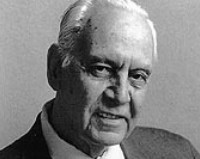Article/Document:
Scientific Panel Concludes Some UFO Evidence Worthy Of Study
Stanford University - Press Release
original source | fair use notice
Summary: In the first independent review of UFO phenomena since 1970, a panel of scientists has concluded that some sightings are accompanied by physical evidence that deserves scientific study.
In the first independent review of UFO phenomena since 1970, a panel of scientists has concluded that some sightings are accompanied by physical evidence that deserves scientific study. But the panel was not convinced that any of this evidence points to a violation of known natural laws or the involvement of an extraterrestrial intelligence.
The review was organized and directed by Peter Sturrock, professor of applied physics at Stanford University, and supported administratively by the Society for Scientific Exploration, which provides a forum for research into unexplained phenomena. The international review panel of nine physical scientists responded to presentations by eight investigators of UFO reports, who were asked to present their strongest data. Von R. Eshleman, professor emeritus of electrical engineering at Stanford, co-chaired the panel.
Although UFO reports date back 50 years, the information gathered does not prove that either unknown physical processes or alien technologies are implicated. But it does include a sufficient number of intriguing and inexplicable observations, the panel concluded. "It may be valuable to carefully evaluate UFO reports to extract information about unusual phenomena currently unknown to science." To be credible to the scientific community "such evaluations must take place with a spirit of objectivity and a willingness to evaluate rival hypotheses" that has so far been lacking, it added.
This conclusion differs from that reached by Dr. Edward U. Condon, director of the Colorado Project, in his 1968 UFO report. He concluded that "further extensive study of UFOs probably cannot be justified in the expectation that science will be advanced thereby." It is very similar, however, to the conclusion reached by the American Institute of Aeronautics and Astronautics' Kuettner Report issued two years later, which advocated "a continuing, moderate-level [research] effort with emphasis on improved data collection by objective means and on high-quality scientific analysis."
In the current study, the scientific panel focused on incidents involving some form of physical evidence, including photographic evidence, radar evidence, vehicle interference, interference with aircraft equipment, apparent gravitational or inertial effects, ground traces, injuries to vegetation, physiological effects on witnesses, and debris. Of particular concern are reports that UFO encounters may be hazardous to people's health. Some witnesses have reportedly suffered radiation-type injuries. These reports led the panel to draw the attention of the medical community to the possible health risks involved.
The scientists found that some of the reported incidents may have been caused by rare natural phenomena, such as electrical activity high above thunderstorms or radar ducting (the trapping and conducting of radar waves by atmospheric channels). However, the panel found that some of the phenomena related to UFOs are not easy to explain in this fashion.
Further analysis of the evidence presented to the panel is unlikely to shed added light on the causes underlying the reports, the scientists said. Most current UFO investigations lack the level of rigor required by the scientific community, despite the initiative and dedication of the investigators involved. But new data, scientifically acquired and analyzed, could yield useful information and advance our understanding of the UFO problem, the panel said.
The reviewers also made the following observations:
The UFO problem is not a simple one, and it is unlikely that there is any simple, universal answer.
Whenever there are unexplained observations, there is the possibility that scientists will learn something new by studying them.
Studies should concentrate on cases that include as much independent physical evidence as possible.
Continuing contact between the UFO community and physical scientists could be productive.
Institutional support for research in this area is desirable.
The review panel consisted of Von Eshleman; Thomas Holzer, High Altitude Observatory in Boulder, Colo.; Randy Jokipii, professor of planetary science, University of Arizona, Tucson; Francois Louange, managing director of Fleximage, Paris, France; H. J. Melosh, professor of planetary science, University of Arizona, Tucson; James J. Papike, professor of earth and planetary sciences, University of New Mexico, Albuquerque; Guenther Reitz, German Aerospace Center, Institute for Aerospace Medicine, Cologne, Germany; Charles Tolbert, professor of astronomy, University of Virginia, Charlottesville; and Bernard Veyret, Bioelectromagnetics Laboratory, University of Bordeaux, France. Eshleman and Holzer served as co-chairs of the panel.
The UFO investigators who presented evidence were Richard Haines, Los Altos, Calif.; Illobrand von Ludwiger, Germany; Mark Rodeghier, Center for UFO Studies, Chicago; John Schuessler, Houston; Erling Strand, Ostfold College, Skjeberg, Norway; Michael Swords, professor of natural science, Western Michigan University, Kalamazoo; Jacques Vallee, San Francisco; and Jean-Jacques Velasco, CNES, Toulouse, France.
The study was initiated by Laurance S. Rockefeller and supported financially by the LSR Fund.
Read more articles on this topic:






